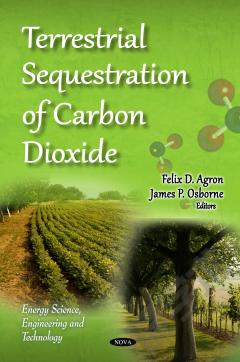Terrestrial Sequestration of Carbon Dioxide
Vegetation is able, through photosynthesis, to remove CO2 from the atmosphere and convert it to carbohydrates. Some of this carbon returns to the atmosphere through decay or burning, but much of it can remain in the soil or in plant tissues for many years. By improved management practices, the amount of carbon stored in soils and plants can be increased. Storing carbon in this way is referred to as terrestrial sequestration. This book examines the land types and management methods that can maximize carbon storage in vegetation and soil and explores the analytical techniques necessary to monitor, verify and account for terrestrially stored carbon, which is required for this carbon to be traded.
{{comment.content}}








 京公网安备 11010802027623号
京公网安备 11010802027623号